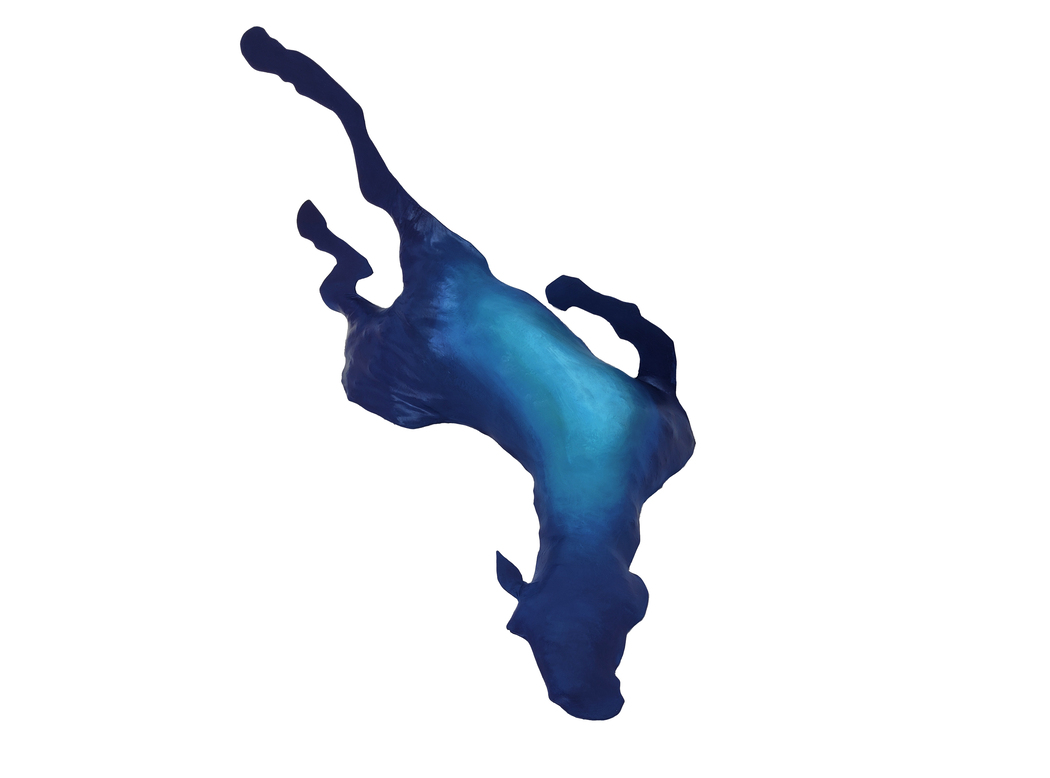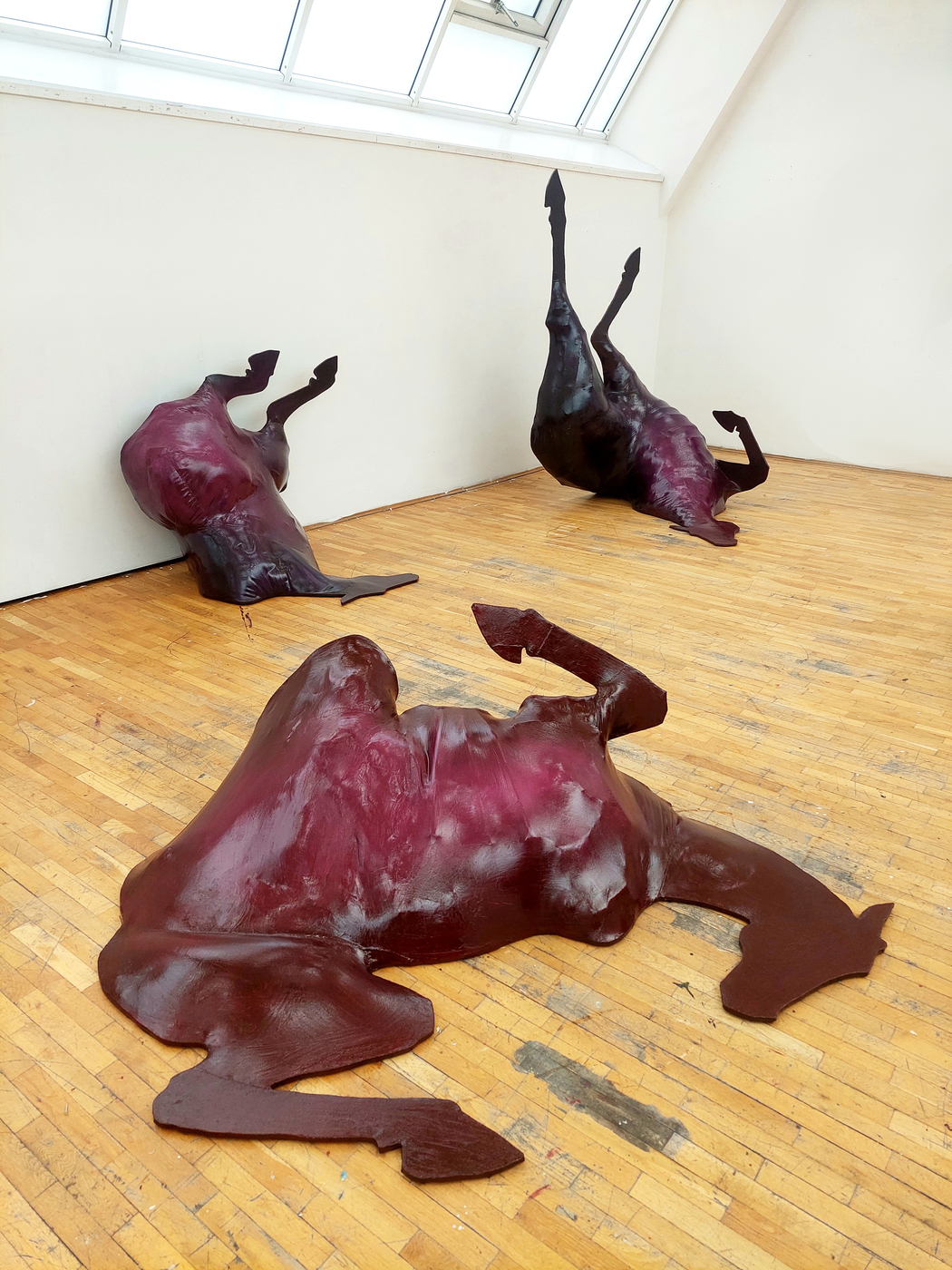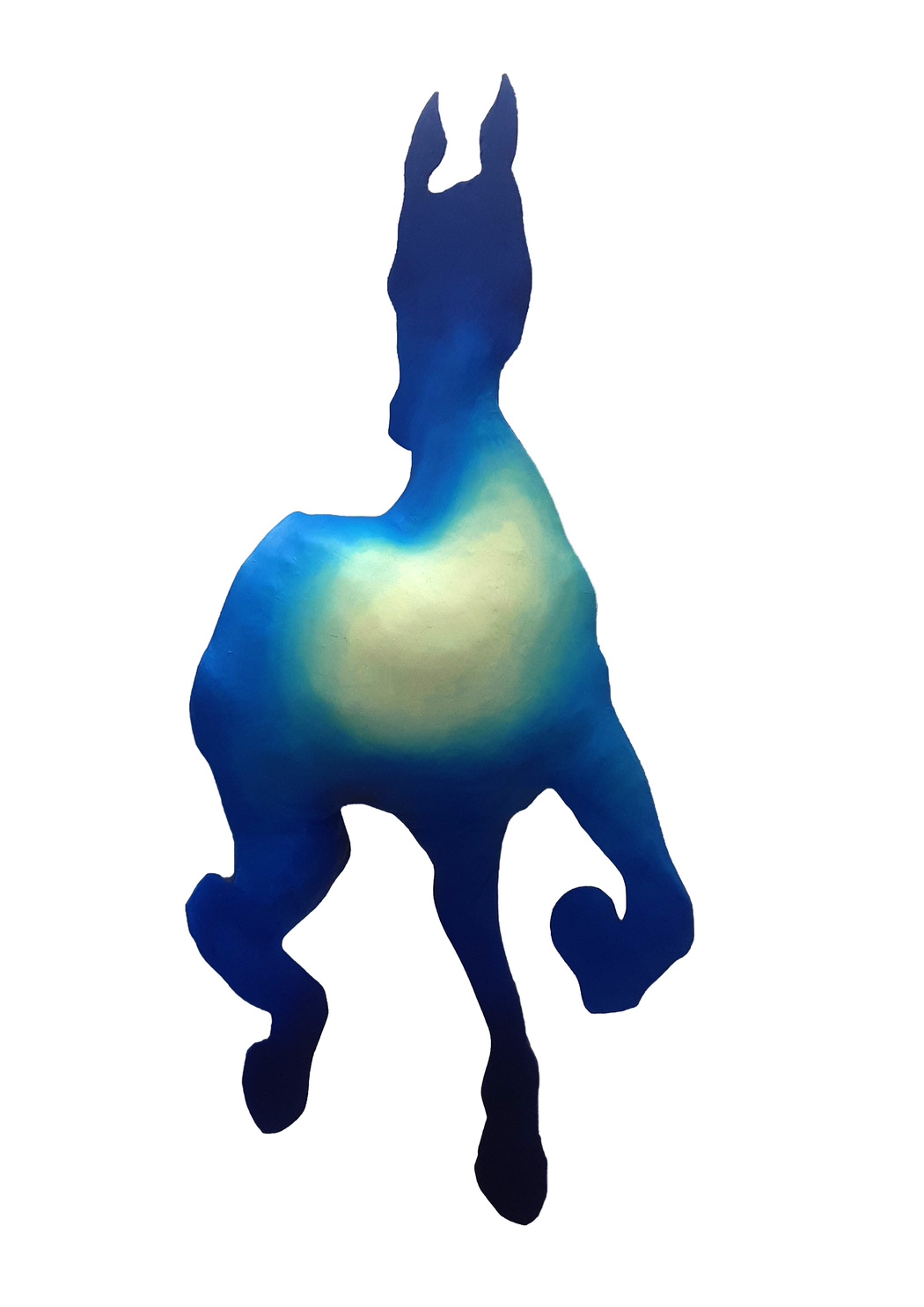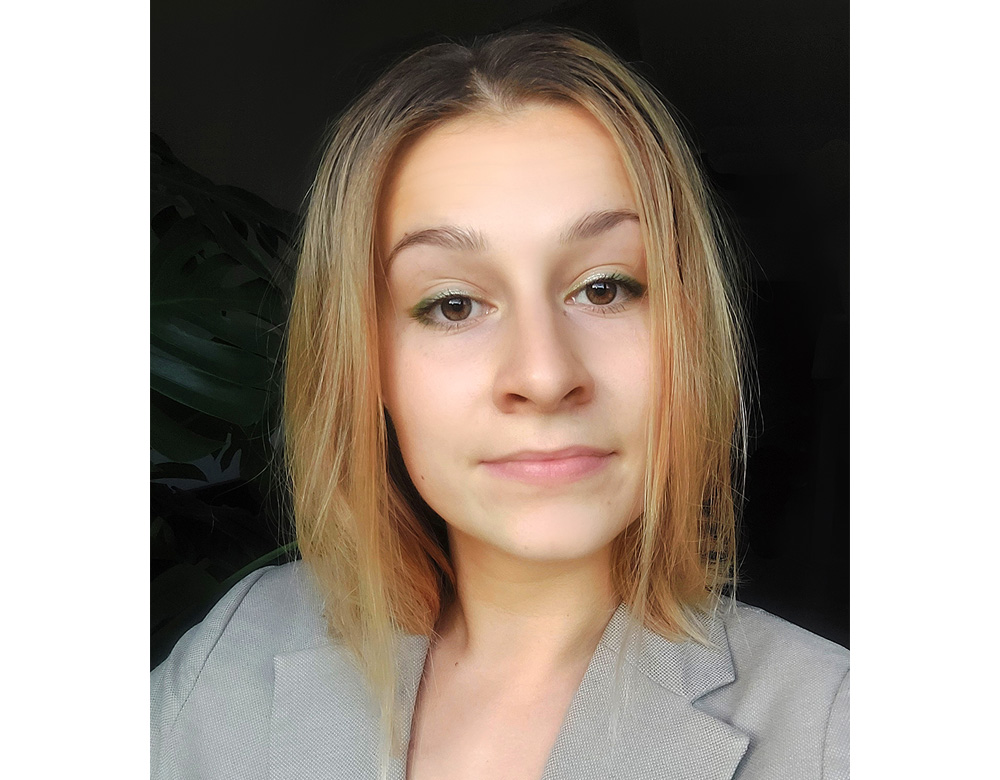Natalia Szerszeń
Year of birth: I am 25 years old, born on June 3, 1999.
Where do you live: I am Polish. My hometown is Częstochowa, where I grew up. I then moved to Gdańsk, and I have lived here for 6 years.
Your education:
I began my artistic education at the Jacek Malczewski Secondary School of Fine Arts in Częstochowa. I completed my studies and earned a Master’s degree in Fine Arts at the Academy of Fine Arts in Gdańsk.
Describe your art in three words: Large-scale, conceptual, bold art.
Your discipline: Mixed media and Art in public space.
Instagram
Can you tell us more about your series “Weakness”? How did you conceptualize the connection between the anatomical and metaphorical aspects of weakness?
The subject of the series of objects is “Weakness,” which serves as a significant point of reference for both my artistic project and theoretical considerations. It is a central theme in my artistic objects. This concept is derived from two contexts—biological, related to the anatomy of a horse, and metaphorical, as an expression of the human condition. To elaborate on the idea behind “Weakness,” I would explain that it refers to both a physical form—the weakest part of an animal’s body, the sensitive area of a horse where the kidneys are located—and a symbolic state of fragility or resignation. Through the objects, I present forms shaped like deformed horses, which, through their posture and arrangement, suggest a moment of submission and collapse under the weight of gravity and their own mass. It is precisely this pivotal moment of “submission to mass” that is most significant. In my installations, I have captured the final moments before a symbolic fall—the point where the body can no longer resist the force of gravity and the weight becomes relentlessly overwhelming. The process, depicted through the distorted forms of horses, reflects on the state of the human body and mind in moments of surrender. In this series of objects, the anatomical and metaphorical aspects of weakness converge into one complete whole.
 Natalia Szerszeń | I’m not a horse girl | 2020
Natalia Szerszeń | I’m not a horse girl | 2020
What inspired you to use horses as a symbol in your work, despite your statement, “I’m not a horse girl”?
“I’m not a horse girl” is the symbolic title of my 2020 series of objects, the one featuring the blue horses. It’s a humorous phrase I often repeated while working on these pieces, and it became something of an inside joke for me during the creative process. I chose the figure of the horse as the protagonist of the situation because, in Polish culture, the horse is often portrayed as a noble and beautiful animal. The noble symbolism of the horse can be recognized, for instance, during the era of Sarmatism, when the nobility admired purebred horses, and artworks often depicted heroic, military, or triumphant themes. After all, we all associate paintings where the horse is interpreted as the embodiment of a ruler—a symbol of noble lineage, reflecting chivalry and wealth. In my work, I present another side of this animal, showing it as a draft animal or one often the first to die on the battlefield. I use the horse as a puppet, depicting a kind of ugliness inherent to this being while also highlighting the naturalism of life. I compose the animals in dramatic poses, as if frozen in the final seconds of their triumph.
How did your technical background in ceramics influence the creation of these large-scale mixed media objects?
I think that references to ceramics can be seen in every piece I create. I love glossy surfaces reminiscent of the transparent glaze used to coat clay. The horses also have the shape of fleshy masses, as if they were crumpled clay spreading outward. I feel the biomorphic quality of their form, and I don’t rule out the possibility that one day I might create smaller versions of the “Weakness” series in clay and fire them in a furnace. My first stage of exploring new shapes usually begins with a piece of paper, plasticine, or clay. Before the final works are created, I spend a few weeks sketching and sculpting small clay or plasticine models. I’ve never fired these models in a ceramic furnace. I treat them as sketches and as a time to search for balance and the shape of the sculpture. Maybe I should cauterize and glaze them? I’ll think about it.
 Natalia Szerszeń | Weakness | 2024
Natalia Szerszeń | Weakness | 2024
Could you elaborate on the process of designing and creating these deformed horse sculptures? What materials and techniques did you find most challenging or rewarding?
I treat the horses as painterly objects—their construction begins with wooden frames, onto which I stretch cotton fabric and adhere it with rabbit skin glue, turning them into my three-dimensional canvases. I finish them using my own technique, applying a custom blend, the composition of which I’ll keep as a little secret. The use of traditional canvas construction techniques and the nobleness of object conservation inspired me to create nearly life-sized horse figures. I focus on lightness—each weighs a maximum of 50-60 kilograms. Some of them are additionally padded, but more often I rely on hand-sewing and stretching the fabric. I don’t hide the stitches, seams, or exposed elements of the framework; I treat them as marks that add a sense of gravity to the work. Their realistic size further emphasizes their symbolism—these horses are life-sized, which amplifies their emotional impact and makes their presence in the space truly striking. I deeply value the time I spend hand-shaping the piece for hours; it’s a process of becoming familiar with the object, its resonance, and its emotions. I hand-stretch and sew the pieces of cotton; this sewing and shaping process is the most important and labor-intensive part. When I feel exhausted after a full day in the studio, it’s a sign that it was a successful day, and I can tell myself, “Good job.”
The idea of “submission of mass” is central to your work. How do you see this concept reflected in human experiences or emotions?
The concept of “submission of mass” in my work refers to the physical and metaphorical tensions associated with weight, force, and limitation. In human experiences and emotions, I see it as a reflection of moments when an individual struggles with pressure—be it physical, psychological, or social. It can represent a fight against one’s own limitations, surrender to a greater force, or the moment when mass, both in a literal and symbolic sense, becomes a tool for transformation. This feeling of being overwhelmed, yet also finding strength in surrender, is fascinating to me, and I strive to capture it in my works.
 Natalia Szerszeń | I’m not a horse girl | 2020
Natalia Szerszeń | I’m not a horse girl | 2020
How did your specialization in “art in public space” shape your approach to these installations?
I graduated from the Academy of Fine Arts in Gdańsk. I studied at the Painting department, specializing in Art in Public Space. This specialization shaped my approach to installations by sensitizing me to the context of the space, its history, function, and interaction with people. When creating my works, I strive to make them an integral part of the space in which they are placed, encouraging viewers to engage in dialogue and to connect with them on an emotional or intellectual level. I think of the space as a co-author of the work—its physical characteristics, the dynamics of people’s movement, and the symbolism influence the form and message of my installations. I want my works to be accessible to a wide audience, to provoke reflection, and to elicit strong, individual reactions from diverse viewers. In the case of “Weakness,” I aimed for the works to be realistically close in size to the mass of a horse, and the pieces are made in such a way that viewers can sit on them and touch them. The relationship between the viewer and my objects is most important to me—let us allow people to touch art in a space, because there is nothing more real than touch.
Your sculptures seem to evoke strong emotional responses. What do you hope viewers feel or think when they interact with your work?
“Personification” is the word that describes the feelings of the viewer when looking at my horses. Each of us has experienced moments of fragility in our emotions and reached a point where the feeling of weakness dominated our mind and body. Dante, in The Divine Comedy, wrote: “One will leave as much trace of himself as smoke in the air, or foam on the water,” and I believe this formulation reflects the thoughts of my viewers when they look at “Weakness.” The horse, which is usually associated with being a majestic and beautiful animal, shown in a state of physical weakness and submission, symbolizes the psychological fragility of humans and the surrender to the weight of mass. Viewers first find emotional or physical traits in my works that they can relate to, and then contemplate the fragility and transience of the human condition. When thinking about my works, one cannot overlook words that describe them, such as withering, vanity, or frailty. These words guide the viewer’s thoughts toward feelings of being overwhelmed, the loss of vitality, transience, and ultimately, death. The perception—both emotional and physical—is very broad, allowing for the experience of many feelings and thoughts in relation to my objects.


Leave a Reply